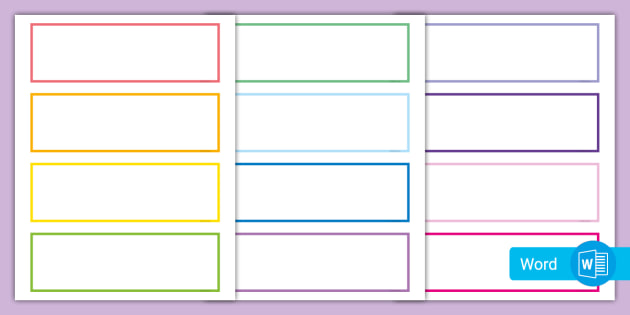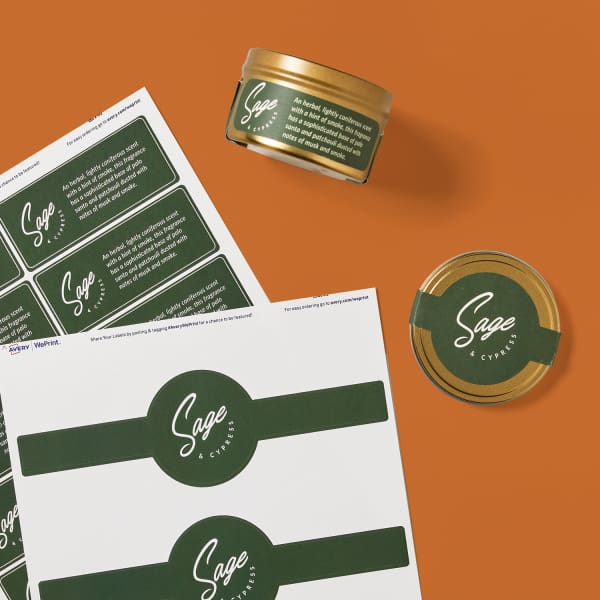Recognizing Exactly How Blank Labels Work to Enhance Your Labeling Experience
Comprehending the auto mechanics of blank labels is essential for maximizing your labeling techniques throughout different contexts. To completely comprehend exactly how these labels can change your procedures, one have to think about the various types offered and the myriad ways they can be tailored to suit certain demands.

Benefits of Utilizing Blank Labels
Blank labels supply a versatile option for various labeling demands, making them indispensable in both individual and expert settings. Their versatility permits customers to develop customized labels tailored to specific requirements, boosting organizational performance. Whether used in home offices, retail environments, or commercial applications, blank labels facilitate the recognition and categorization of items, papers, and personal things.
One substantial advantage of blank labels is their cost-effectiveness. By enabling individuals to publish only the labels they need, waste is reduced, and inventory management comes to be much more workable. Additionally, blank labels work with various printing approaches, consisting of inkjet and laser printers, making them accessible for various users.

Additionally, making use of blank labels simplifies the process of updating info, as users can quickly publish new labels to replace obsolete ones, making certain that all items and papers are properly classified. Overall, blank labels offer a functional and reliable labeling remedy for varied applications.
Types of Blank Labels Available
What choices are readily available when it comes to blank labels? Blank labels come in a variety of kinds, each suited for different applications and preferences.
Another prominent alternative is synthetic labels, frequently made from products like polyester or vinyl. These labels are understood for their longevity and resistance to water, chemicals, and tearing, making them ideal for harsh atmospheres. They are generally made use of in commercial setups or for labeling products that might be exposed to dampness.
In addition, there are thermal transfer labels, which call for a printer that utilizes warm to transfer ink onto the label surface area. These labels are favored for their top notch print and long life.
Lastly, specialized labels provide to particular demands, such as removable labels for short-term usage or high-temperature labels for extreme problems. Comprehending these choices enables customers to choose one of the most suitable blank label for their one-of-a-kind labeling needs.
Personalization Options for Labels
A large range of modification alternatives is available for labels, permitting individuals to customize them to specific requirements and branding needs. Individuals can choose from numerous sizes, forms, and products to ensure that the labels effectively fit their designated function. Usual materials include paper, polyester, and find out this here plastic, each offering various levels of sturdiness and visual charm.
Shade alternatives play an important role in modification, enabling brand names to keep uniformity with their company identification. Individuals can select from a spectrum of shades and even go with customized printing to match particular branding elements. In addition, labels can be published with distinct layouts, logo designs, and text, improving brand acknowledgment and aesthetic influence.
An additional crucial aspect is the selection of adhesive. Labels can be made with permanent, detachable, or repositionable adhesives, depending on the application needs. This adaptability permits efficient labeling options throughout numerous atmospheres, from retail to commercial settings.

Tips for Effective Labeling
Effective labeling goes past modification; it additionally entails calculated factors to consider that enhance performance and communication. To attain efficient labeling, begin by clearly specifying the objective of each tag. Consider the info that needs to be communicated and ensure it is offered in a straightforward manner. Making use of concise language and staying clear of lingo can substantially enhance comprehension.
Next, focus on exposure by picking suitable colors and fonts. High comparison in between text and history improves readability, while larger font styles facilitate fast recognition. In addition, guarantee that labels are positioned in a regular and sensible manner, making it simpler for individuals to situate and interpret info.
Consider the longevity of labels as well. Pick materials matched my blog for the particular setting where the labels will be used, whether it be inside or outdoors. Water-proof or tear-resistant options may be required depending upon the context.
Last but not least, frequently testimonial and upgrade your labels to mirror any type of adjustments in info or use. This positive technique not just keeps clearness but also avoids confusion in time. By complying with these ideas, you can make best use of the efficiency of your labeling initiatives, ensuring they offer their intended function effectively.
Applications of Blank Labels
Blank labels offer various applications across numerous sectors, making them a very useful tool for organization and interaction. These functional labels are generally used in storage facilities for stock management, enabling organizations to quickly identify and track products. By using blank labels to storage space bins, shelves, or pallets, firms can simplify their procedures and lower the possibility of errors.
In the health care industry, blank labels play an essential role in classifying medicines and medical products, making certain correct identification and use. Customizable labels can include necessary information such as dosage, expiration days, and person details, boosting safety and security and compliance.
In retail, blank labels help in pricing items, giving promotions, or classifying rack areas, which eventually improves the customer experience. They enable quick updates to rates or product information without the demand for pre-printed labels.
Additionally, blank labels are helpful for individual use, such as arranging view office, crafting, or classifying food containers. Their flexibility allows individuals to develop tailored options that fulfill details needs. Overall, the applications of blank labels are comprehensive, emphasizing their importance in cultivating efficiency and clearness in different settings.
Verdict
To conclude, blank labels present a versatile and reliable service for different classifying demands. Their flexibility in size, shape, and product permits for customized applications throughout different settings. By leveraging modification options and effective labeling strategies, organizations can boost clarity and communication (Blank Labels). Eventually, the integration of blank labels into functional procedures adds to boosted effectiveness, making them an important resource for both individual and expert usage.